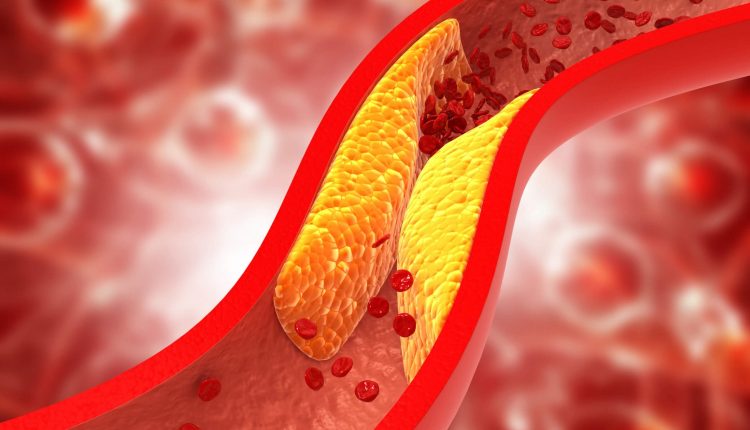
What is atherosclerosis and how to prevent it
Atherosclerosis is a chronic and progressive disease that affects the blood vessels, developing silently over the years and then manifesting itself in people in adulthood and old age
As with other diseases affecting the cardiovascular system, there are many steps we can take to prevent its onset and avoid complications, which can sometimes be serious.
What is atherosclerosis?
Atherosclerosis and atherosclerosis, even though they are generally used as synonyms, have different meanings: the term ‘atherosclerosis’ identifies all forms of hardening, thickening and loss of elasticity of the arterial wall, including atherosclerosis, which is the most common and clinically relevant form.
Atherosclerosis is a disease characterised by the presence of inhomogeneous plaques (atheromas) that invade the lumen of medium- and large-calibre arteries by depositing on their inner surface.
The plaques consist of circulating lipids (cholesterol), inflammatory and muscle cells, and the proliferation of connective tissue, which is naturally present in the human body and normally performs a supporting function for other tissues.
Symptoms of atherosclerosis appear when plaque growth or rupture obstructs the vessel or reduces blood flow within it; symptoms vary depending on the location and calibre of the affected artery.
What diseases cause atherosclerosis?
Atherosclerosis is initially asymptomatic, often for decades.
Symptomatology develops when lesions within the vessels obstruct blood flow, with different pathologies depending on the site affected.
A) Coronary artery disease is a condition in which the coronary arteries are obstructed by an atheroma formed by fat, cholesterol, calcium and other substances in the blood; symptoms such as:
- angina pectoris: this is a chest pain that usually follows intense exertion or psychological stress and tends to disappear within about ten minutes of its onset, without leaving permanent damage to the heart;
- myocardial infarction: chest pain that is oppressive and constricting and does not diminish with rest is the obvious alarm; it is due to the lack of blood supply to part of the heart’s muscle tissue, which ‘dies’.
It is possible that an anginal attack is an alarm bell for the appearance of a real heart attack in a short time.
B) Cerebral ischaemia occurs when the interruption or reduction of blood flow to the brain leaves it deprived of oxygen:
- in the case of a stroke, the sudden and prolonged occlusion of the vessel results in reduced function of those areas of the body controlled by the damaged brain area;
- in the case of transient ischaemic attack (TIA), there is a brief or partial interruption of blood supply to a part of the brain and the disturbances it presents with are the same as in a stroke, but they resolve within a few minutes to a few hours, so that the affected person fully recovers his or her functionality.
Peripheral arteriopathy is caused by the formation of atherosclerotic plaques in the arteries that supply the lower limbs, where the reduced oxygen supply can lead to pain and difficulty in walking (claudication) up to limb ischaemia.
Atherosclerosis: what are the causes?
The causes of atherosclerosis are not completely understood, but a combination of modifiable and non-modifiable risk factors are identified, including:
- age;
- smoking;
- an unbalanced diet, high in saturated fats and low in vitamins and minerals;
- overweight and obesity;
- diabetes;
- lack of physical activity;
- hypertension.
How to prevent atherosclerosis?
Aggressive treatment of risk factors with even drastic lifestyle changes, if necessary, significantly reduces the development of atherosclerosis, and allows its progression to slow down, thus preventing the onset of cardiovascular disease.
Lifestyle changes include:
- maintaining normal blood pressure: it is also important to keep it monitored, to notice any changes over time;
- abolishing smoking;
- lowering the level of ‘bad’ LDL cholesterol; again, remembering to monitor its level with regular examinations is of paramount importance;
- stress control: there are many studies confirming that stress and anxiety, especially if continuous, play a role in the onset of atherosclerosis;
- elimination or, at least, moderate consumption of alcohol;
- maintaining an ideal body weight;
- regular physical activity;
- following a healthy, balanced diet, consuming plenty of fresh fruit and vegetables, fibre, whole grains, pulses, fish and lean meat, and limiting consumption of saturated fats, refined carbohydrates, salt and sugar.
Are there cures for atherosclerosis?
Currently, there are no specific cures that can reverse the process of atherosclerosis.
However, a specialist visit is essential, as pharmacological treatment is sometimes necessary to correct at least some risk factors and thus slow down the progression of atherosclerosis and the onset of cardiovascular disease.
Read Also:
Emergency Live Even More…Live: Download The New Free App Of Your Newspaper For IOS And Android
Defibrillator: What It Is, How It Works, Price, Voltage, Manual And External
The Patient’s ECG: How To Read An Electrocardiogram In A Simple Way
Signs And Symptoms Of Sudden Cardiac Arrest: How To Tell If Someone Needs CPR
Inflammations Of The Heart: Myocarditis, Infective Endocarditis And Pericarditis
Quickly Finding – And Treating – The Cause Of A Stroke May Prevent More: New Guidelines
Atrial Fibrillation: Symptoms To Watch Out For
Ischaemic Heart Disease: What It Is, How To Prevent It And How To Treat It
Family Hypercholesterolemia: What It Is And How To Treat It
What Is Cholesterol And Why Is It Tested To Quantify The Level Of (Total) Cholesterol In The Blood?
Ischaemic Heart Disease: Chronic, Definition, Symptoms, Consequences
Atherosclerosis: What It Is, What Causes It And How To Treat It



